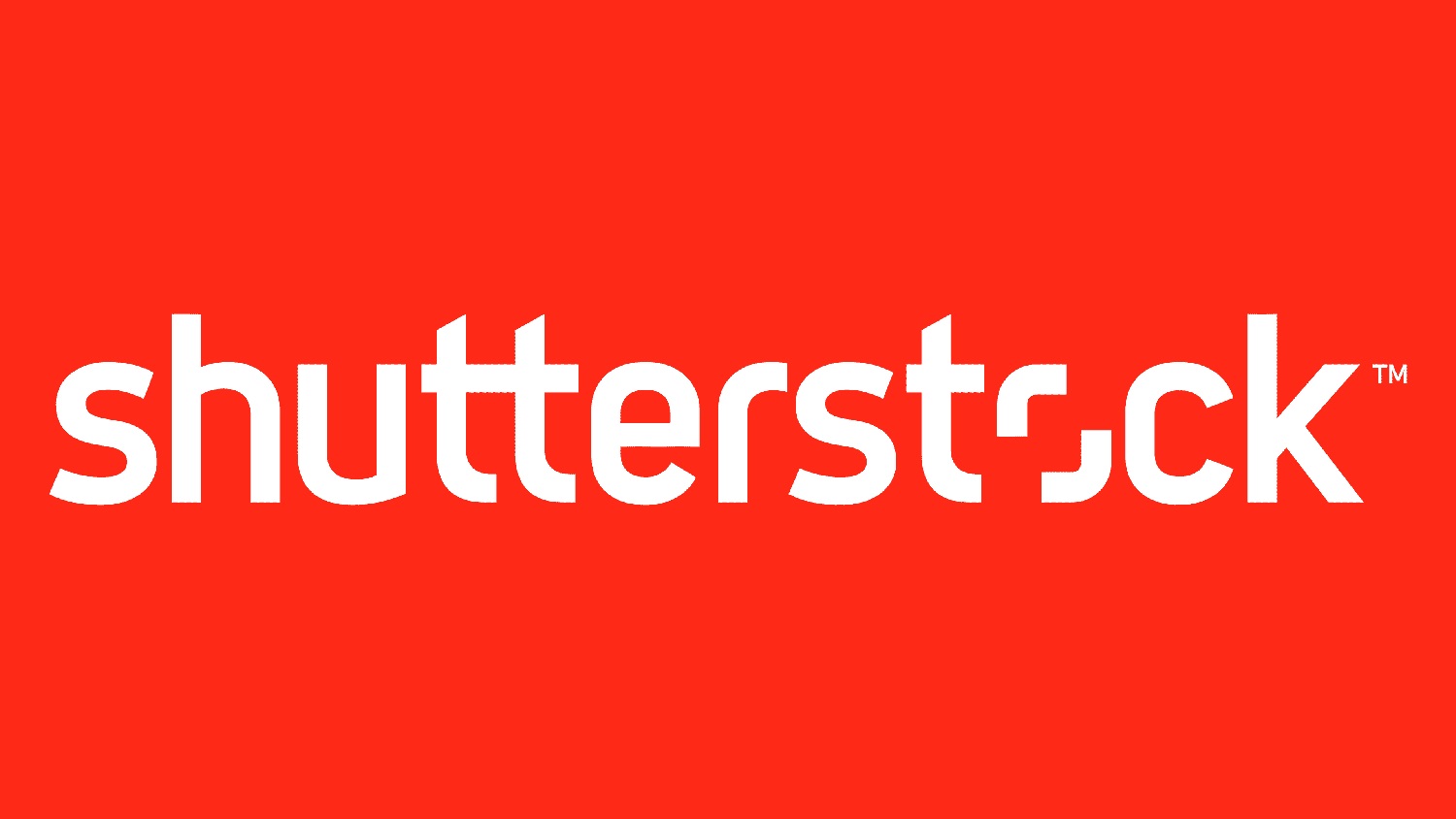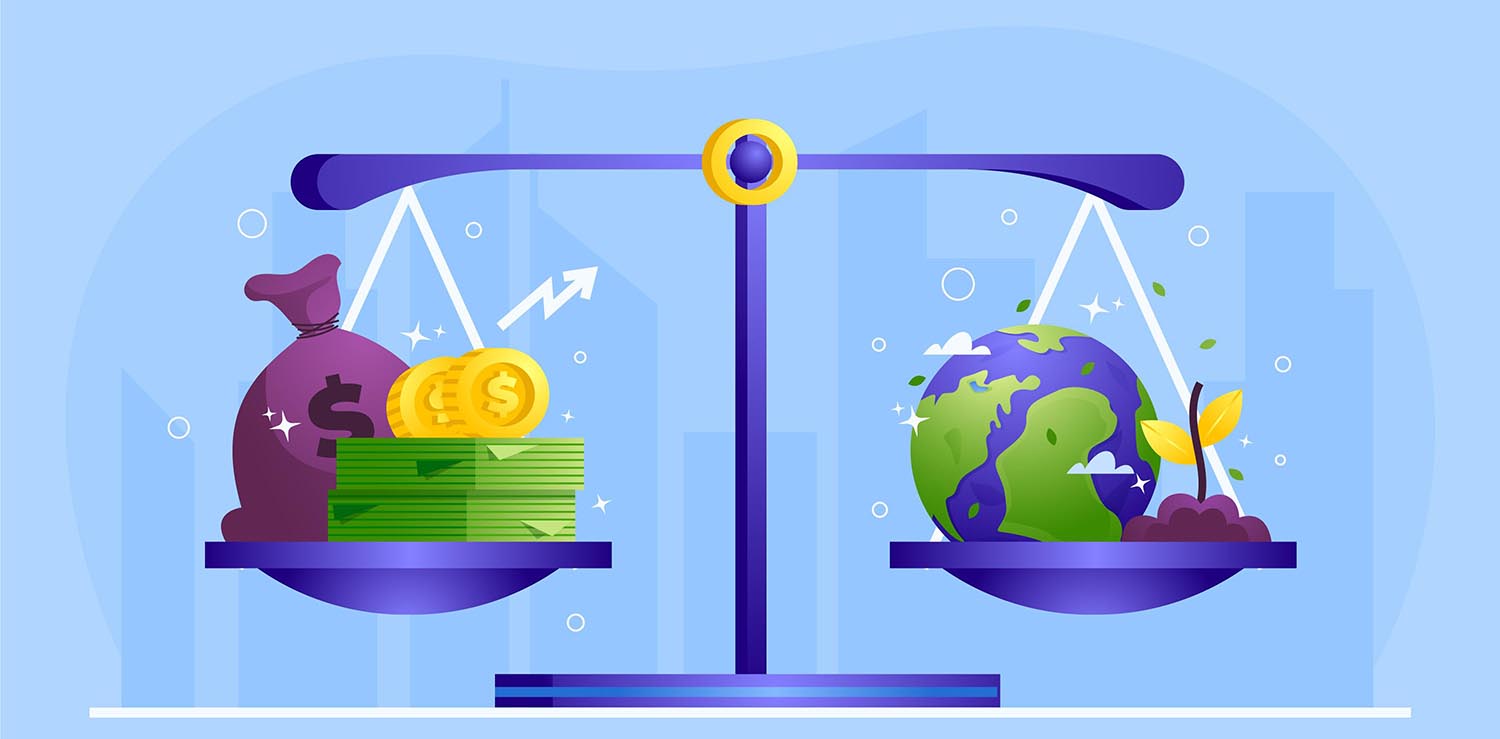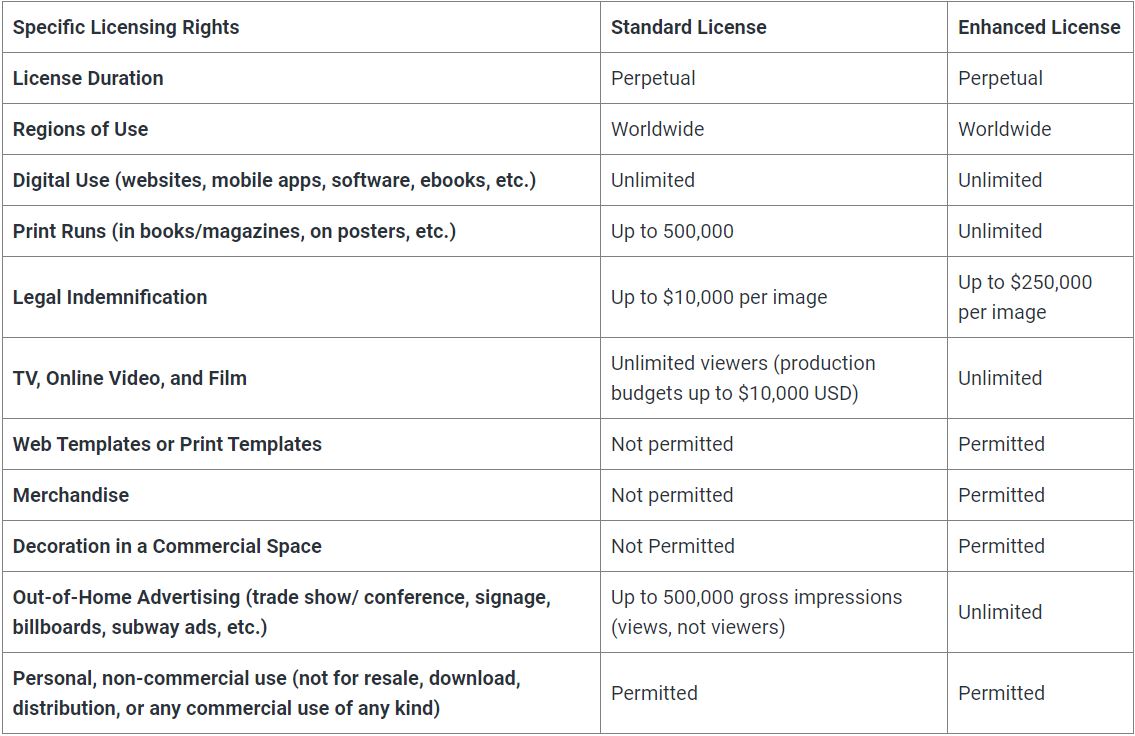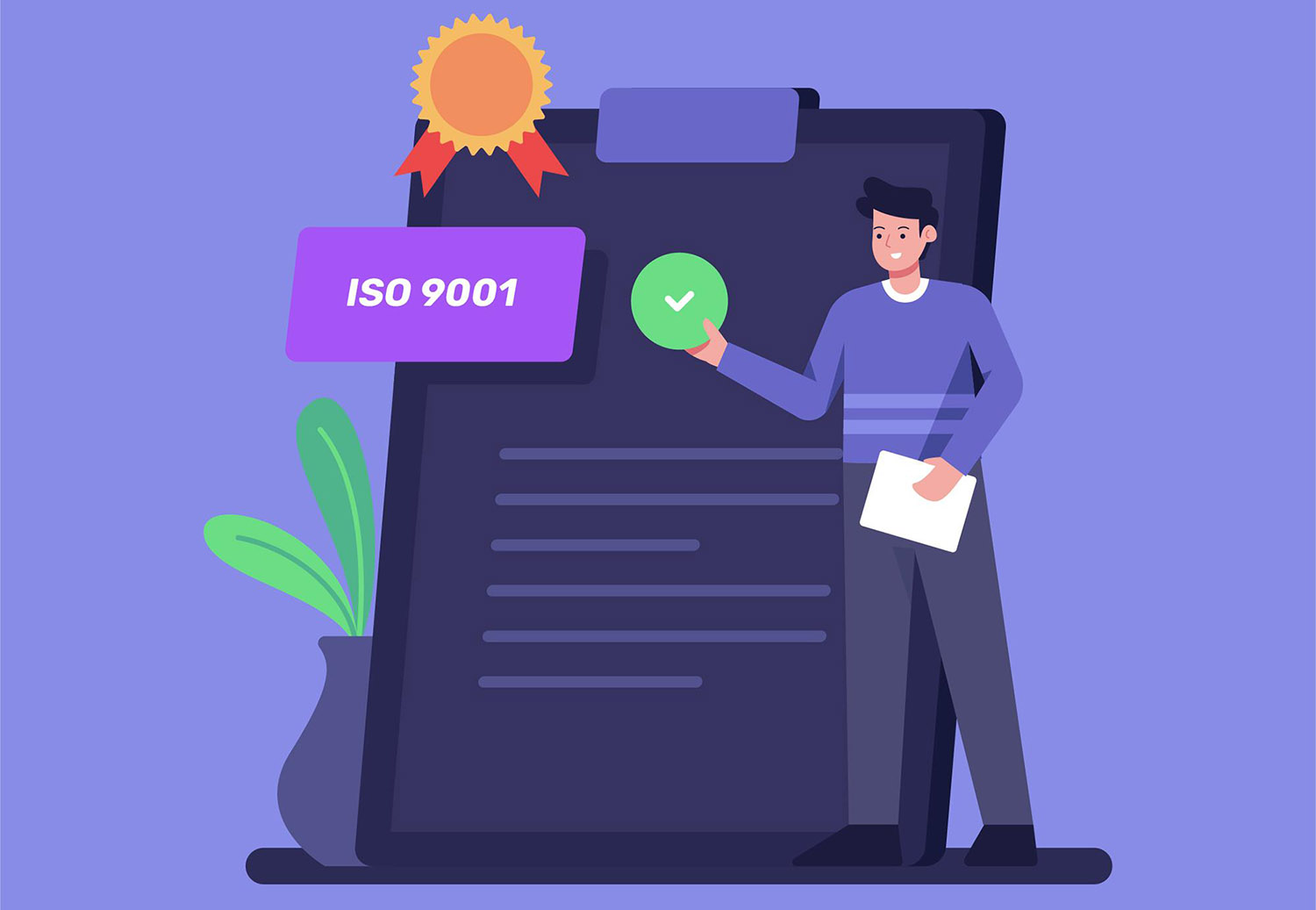In the dynamic world of modern marketing, visuals are an indispensable tool for capturing attention, conveying messages, and making lasting impressions. Among the vast resources available, Shutterstock stands out as a treasure trove of high-quality images that can transform your commercial projects. However, the question often arises: Are Shutterstock images free for use in commercial endeavors?
This blog post delves into the intricate realm of Shutterstock images within the context of commercial projects. While the platform offers a plethora of stunning visuals, the idea of "free" usage is a common misconception that needs clarification. In this exploration, we aim to shed light on Shutterstock's licensing models, their distinctions between commercial and non-commercial use, and how to navigate the complex landscape of image licensing. By the end of this journey, you'll be equipped with a clear understanding of how to harness the power of Shutterstock images effectively and responsibly in your commercial ventures. So, let's embark on this enlightening expedition to make your visual storytelling truly compelling.
Understanding Shutterstock Licensing
To make informed decisions about using Shutterstock images for commercial projects, it's crucial to comprehend the licensing options available. Shutterstock provides various licensing models, each with specific terms and conditions. Here's a breakdown of Shutterstock's licensing to guide your understanding:
1. Licensing Models:
Shutterstock offers two primary licensing models:
- Standard License: This is the default licensing option for most https://imgpanda.com/choosing-the-right-platform-for-selling-photos-alamy-vs-shutterstock/images on Shutterstock. It grants you specific usage rights for a one-time fee.
- Enhanced License: The enhanced license provides broader usage rights than the standard license. It is typically required for certain commercial applications, such as merchandise for resale.
2. Standard License Usage:
The standard license covers a wide range of common uses, including:
- Web and social media usage.
- Print materials like brochures, flyers, and posters.
- Digital advertisements.
- Editorial use in newspapers and magazines.
- Presentations.
- Non-commercial projects.
3. Commercial vs. Non-Commercial Use:
It's vital to distinguish between commercial and non-commercial use:
- Commercial Use: This refers to using images for business or promotional purposes, such as advertising, marketing, or selling products or services.
- Non-Commercial Use: Non-commercial use involves personal, educational, or nonprofit projects where there is no intention of financial gain.
4. Standard License Restrictions:
The standard license imposes certain restrictions to protect the intellectual property of content creators:
- No reselling the image as a standalone product.
- No use in defamatory, harmful, or illegal content.
- No unauthorized sharing of the image.
- No use in trademarks, logos, or brand identities.
5. Attribution:
Most Shutterstock images do not require attribution, but it's advisable to review the specific licensing terms for each image.
6. Enhanced License:
For specific commercial applications, you may need an enhanced license. It grants additional permissions, such as using images on merchandise for resale, larger print runs, or templates for resale. The cost of an enhanced license varies based on the image and intended use.
7. Extended License:
Shutterstock also offers extended licenses for commercial use, providing even broader permissions and exclusivity options.
Understanding these licensing distinctions is essential for ensuring that your usage of Shutterstock images aligns with your project's commercial or non-commercial nature. By selecting the appropriate license, you can leverage the vast Shutterstock library effectively while respecting the rights of content creators and avoiding legal complications.
[caption id="attachment_192600" align="alignnone" width="1500"] Understanding Shutterstock Licensing[/caption]
Understanding Shutterstock Licensing[/caption]
Also Read This: How to Create a Beautiful Side Fishtail Braid
Commercial vs. Non-Commercial Usage
Distinguishing between commercial and non-commercial usage of Shutterstock images is pivotal in determining how you can legally and ethically incorporate them into your projects:
1. Commercial Usage:
Definition: Commercial usage involves using images for business, promotional, or revenue-generating purposes. It encompasses a wide range of activities aimed at generating income or advancing a commercial enterprise.
Examples:
- Advertising and marketing campaigns.
- Product or service promotions.
- Corporate presentations and reports.
- Websites and social media content for businesses.
- Sales and promotional materials.
- Use in products for resale (e.g., merchandise featuring the image).
2. Non-Commercial Usage:
Definition: Non-commercial usage pertains to using images for purposes that do not involve generating income, promoting products or services, or advancing commercial interests. It encompasses personal, educational, and nonprofit projects.
Examples:
- Personal blogs and websites.
- Educational presentations and materials (e.g., classroom presentations, academic papers).
- Nonprofit or charitable initiatives and materials.
- Personal artwork or creative projects.
- Editorial use in news articles, blogs, or documentaries without a promotional agenda.
Key Considerations:
- Intent: The primary factor distinguishing commercial from non-commercial usage is the intent behind using the image. If the image is employed to promote or support a commercial venture or financial gain, it's considered commercial usage.
- Financial Gain: Any project that aims to generate income or promote products or services falls into the commercial category, even if the project is run by a nonprofit organization.
- Ethical Usage: It's important to adhere to ethical guidelines when using images. Even in non-commercial projects, accurate representation and responsible usage are essential.
- Licensing: Shutterstock's licensing terms vary based on commercial or non-commercial use. Always choose the appropriate license to align with your project's purpose.
Understanding these distinctions enables you to select the right licensing model and use Shutterstock images in a manner that complies with legal and ethical standards. Whether you're enhancing your business's marketing materials or embarking on a personal creative endeavor, being aware of the nature of your project is crucial for responsible image usage.
[caption id="attachment_192601" align="alignnone" width="1500"] Commercial vs. Non-Commercial Usage[/caption]
Commercial vs. Non-Commercial Usage[/caption]
Also Read This: How to Change LCD on iPhone 4S
Shutterstock's Standard Licensing for Commercial Use
Shutterstock's standard licensing model provides a flexible and accessible way to use images for various commercial projects. Here's an in-depth look at how it works:
- Versatile Commercial Use: Shutterstock's standard license allows you to use licensed images for a wide range of commercial purposes. This includes web and print materials, advertising campaigns, social media content, presentations, and more.
- Worldwide Usage: The standard license typically grants you the right to use the image globally. This means you can employ the image in projects and campaigns intended for audiences worldwide.
- Duration: The standard license often provides perpetual usage rights, meaning you can use the image indefinitely, as long as you adhere to the license terms. There's no need to renew the license for ongoing projects.
- Single User: The standard license generally permits a single user or the entity that purchased the license to use the content. If multiple individuals within an organization need access, they may require separate licenses.
- Restrictions: While versatile, the standard license does come with important restrictions to consider. These may include:
- No Reselling as a Standalone Product: You cannot resell the licensed content as a standalone product, such as selling the image itself on a stock photo platform.
- No Use in Defamatory or Harmful Content: You are prohibited from using the content in any way that is defamatory, harmful, or illegal.
- No Use in Trademarks or Logos: You cannot use Shutterstock content in a way that implies endorsement, sponsorship, or association with a trademarked brand or logo.
- No Unauthorized Sharing: You cannot redistribute the content to others in a manner that allows them to use it without obtaining their own license.
- Attribution: In most cases, Shutterstock's standard license does not require attribution. This means you are not obligated to credit the content creator when using the image, although providing attribution is often appreciated as good practice.
- Easy Access: Shutterstock's standard licensing is user-friendly and doesn't typically involve complex application processes or approvals. You can purchase and download licensed content quickly.
- Compliance: Using images under the standard license ensures that you are complying with Shutterstock's terms and conditions, which are designed to protect the rights of content creators while enabling you to use visuals effectively in your commercial projects.
When using images from Shutterstock for commercial purposes, always review the specific terms and conditions associated with each image to ensure your usage aligns with the license. This ensures that your projects are legally and ethically sound, with the potential for a broader global reach.
[caption id="attachment_192602" align="alignnone" width="1135"] Shutterstock's Standard Licensing for Commercial Use[/caption]
Shutterstock's Standard Licensing for Commercial Use[/caption]
Also Read This: How to Access Age-Restricted Content on Dailymotion
Royalty-Free Images in Commercial Projects
Royalty-free images offer an attractive option for incorporating visuals into commercial projects efficiently and cost-effectively. Here's a closer look at using royalty-free images in commercial contexts:
1. Versatile Commercial Use:
Royalty-free images are a popular choice for commercial projects due to their flexibility. They can be used across a wide range of commercial applications, including:
- Website design and development.
- Print marketing materials (brochures, flyers, banners).
- Digital advertising campaigns.
- Social media content creation.
- Corporate presentations.
- Product packaging and labels.
- Commercial blogs and articles.
2. Cost Efficiency:
One of the primary advantages of royalty-free images is their cost-effectiveness. You pay a one-time fee to access and use the image for multiple projects and purposes, without incurring additional royalties based on usage.
3. Perpetual Use:
Royalty-free licenses often grant you the right to use the image indefinitely. This means you can incorporate the image into various projects over time without the need to renew the license.
4. No Ongoing Royalties:
The term "royalty-free" indicates that you do not need to pay ongoing royalties or fees each time you use the image. This makes budgeting for commercial projects more predictable.
5. Easy Access and Download:
Royalty-free images are readily available for download from stock photo platforms like Shutterstock. This ease of access streamlines the creative process and saves time for commercial projects with tight deadlines.
6. Content Variety:
Royalty-free libraries typically offer a vast variety of images, ensuring that you can find visuals that align with your project's goals, brand identity, and target audience.
7. Ethical Considerations:
Even in commercial use, it's important to adhere to ethical standards. Ensure that the selected royalty-free image is used in a responsible and contextually appropriate manner.
8. Licensing Compliance:
Using royalty-free images from reputable sources like Shutterstock ensures that you are complying with licensing terms. This mitigates the risk of legal issues related to image usage.
9. No Attribution Requirement:
Most royalty-free licenses do not require attribution to the content creator. While it's not mandatory, providing attribution is often appreciated as good practice.
10. Regular Updates and Fresh Content:
Stock photo platforms regularly update their libraries with new images, ensuring that you have access to fresh content for your commercial projects.
Royalty-free images are a valuable resource for businesses and marketers looking to enhance their commercial projects with compelling visuals. When using these images, it's important to select reputable sources, respect ethical guidelines, and ensure that your usage aligns with the licensing terms to create engaging and legally compliant content.
[caption id="attachment_192603" align="alignnone" width="1500"] Royalty-Free Images in Commercial Projects[/caption]
Royalty-Free Images in Commercial Projects[/caption]
Also Read This: How to Change Layout on Behance Portfolio Mobile Version Optimizing Your Portfolio for Mobile Devices
Extended Licenses for Commercial Projects
Extended licenses offer an expanded set of permissions and rights, making them a valuable choice for specific commercial endeavors. Here's a detailed exploration of how extended licenses can enhance your commercial projects:
1. When to Consider Extended Licenses:
Extended licenses are typically required when your commercial project goes beyond the scope of a standard license. Common scenarios include:
- Merchandise for Resale: If you plan to use the image on physical products for resale, such as t-shirts, mugs, or posters.
- Unlimited Print Runs: When you need the image for print materials with a large print run, like magazines or brochures.
- Templates for Resale: If you intend to create and sell design templates (e.g., website themes, PowerPoint templates) that incorporate the image.
- Film and TV Productions: For use in films, documentaries, or television productions.
- Large-Scale Advertising: When using the image in high-visibility advertising campaigns or billboards.
2. Benefits of Extended Licenses:
Extended licenses provide several advantages for commercial projects:
- Broader Usage Rights: They grant you additional rights and permissions tailored to your specific project needs.
- Exclusivity: In some cases, an extended license can grant you exclusive use of the image for a defined period.
- Legal Protection: Extended licenses often come with legal protection and indemnification against potential copyright claims.
- Peace of Mind: Using an extended license ensures that you're using the image within the bounds of the law and licensing terms.
3. Cost Considerations:
Extended licenses typically come with an additional cost. The price may vary depending on factors like the image's popularity, intended use, and the agency's pricing structure.
4. License Duration:
The duration of an extended license can vary. Some extended licenses grant indefinite usage rights, while others may have a defined period.
5. Application Process:
In some cases, you may need to contact the stock photo agency directly or go through an application process to obtain an extended license, especially for exclusive use or specialized projects.
6. Ethical and Legal Compliance:
Using extended licenses ensures that your commercial projects are in full compliance with licensing terms, copyright laws, and intellectual property rights. This minimizes the risk of legal disputes or copyright infringement issues.
7. Return on Investment (ROI):
Assess the cost of the extended license in relation to the potential benefits and revenue generated by your commercial project. For many businesses, the investment in an extended license can be well worth the expanded usage rights.
By considering extended licenses for your commercial projects, you can access a broader range of usage rights, gain legal protection, and confidently use images in ways that align with your project's goals. This ensures that your commercial endeavors are not only visually compelling but also legally sound.
[caption id="attachment_192604" align="alignnone" width="1500"] Extended Licenses for Commercial Projects[/caption]
Extended Licenses for Commercial Projects[/caption]
Also Read This: Write Comprehensive White Papers with Canva White Paper Template
Ethical and Legal Considerations
When incorporating Shutterstock images into your commercial projects, it's essential to navigate the ethical and legal landscape carefully. Here are key considerations to ensure your usage aligns with ethical standards and legal requirements:
- License Compliance: Review and select the appropriate Shutterstock license that matches the nature of your commercial project. Understand the rights and restrictions associated with each license type (standard, extended, etc.).
- Model Releases: If your commercial project includes images featuring recognizable individuals, especially in promotional contexts, ensure that you have obtained the necessary model releases and permissions to use their likenesses.
- Trademark and Copyrights: Be vigilant about the presence of trademarked or copyrighted items, logos, or brands within Shutterstock images. Ensure that their inclusion does not lead to potential legal issues or infringement claims.
- Respectful and Accurate Usage: Use images in a manner that accurately represents their context and content. Avoid manipulations or alterations that may distort the original meaning or deceive viewers.
- Attribution: While many Shutterstock images do not require attribution, consider providing it as a courtesy to creators when appropriate. Check the specific licensing terms associated with each image.
- Ethical Representation: Ensure that the images you choose and their usage align with ethical standards. Avoid using visuals that perpetuate stereotypes, promote harmful content, or mislead your audience.
- Privacy Concerns: Respect individuals' privacy rights when using images that capture private or sensitive moments. Be aware of any applicable privacy laws or guidelines.
- Fair Use: Understand the concept of "fair use" in copyright law, which allows for limited use of copyrighted material without permission for purposes like commentary, criticism, news reporting, or education. However, the application of fair use can be complex and may require legal advice in some cases.
- Consistency with Brand Identity: If you're using images for branding or marketing, ensure that they align with your brand's identity and message. Consistency in visual representation is crucial for building brand recognition.
- Legal Advice: If you have uncertainties about image usage or licensing terms, consider seeking legal counsel to avoid potential legal implications of copyright infringement.
- Documentation: Keep records of your image licenses, permissions, and model releases. These records can be invaluable in case of disputes or audits.
- Educate Your Team: If you're working with a team on your commercial project, ensure that everyone involved is aware of and follows ethical and legal guidelines for image usage.
By adhering to these ethical and legal considerations, you can confidently use Shutterstock images in your commercial projects, creating content that not only captures your audience's attention but also respects the rights of content creators and complies with intellectual property laws.
[caption id="attachment_192605" align="alignnone" width="1500"] Ethical and Legal Considerations[/caption]
Ethical and Legal Considerations[/caption]
Also Read This: Behance font usage guide
Guidelines for Worry-Free Commercial Usage
Using Shutterstock images in your commercial projects can be a creative and effective way to enhance your marketing and branding efforts. To ensure worry-free usage and avoid potential legal or ethical implications, follow these guidelines:
- Choose the Right License: Select the appropriate Shutterstock license that aligns with your project's commercial nature. Carefully review the licensing terms and understand the rights and restrictions associated with each license type.
- License Documentation: Keep a record of your image licenses, including details such as the image source, license type, and usage details. This documentation can serve as proof of compliance in case of any questions or disputes.
- Model Releases: When using images featuring recognizable individuals, especially in promotional contexts, obtain the necessary model releases and permissions to use their likenesses. This ensures you have the legal right to use their images in your commercial projects.
- Respect Intellectual Property: Be vigilant about trademarked or copyrighted items, logos, or brands within Shutterstock images. Ensure that their inclusion does not lead to potential legal issues or infringement claims. Respect the intellectual property of others.
- Ethical Usage: Use images in a manner that accurately represents their context and content. Avoid manipulations or alterations that may distort the original meaning or deceive viewers. Ensure your usage aligns with ethical standards.
- Attribution: While many Shutterstock images do not require attribution, consider providing it as a courtesy to creators when appropriate. Always check the specific licensing terms associated with each image.
- Privacy Concerns: Respect individuals' privacy rights when using images that capture private or sensitive moments. Be aware of any applicable privacy laws or guidelines and obtain necessary permissions.
- Consistency with Brand Identity: If you're using images for branding or marketing, ensure that they align with your brand's identity and message. Consistency in visual representation is crucial for building brand recognition.
- Fair Use Understanding: Familiarize yourself with the concept of "fair use" in copyright law. It allows for limited use of copyrighted material without permission for purposes like commentary, criticism, news reporting, or education. However, the application of fair use can be complex and may require legal advice.
- Legal Consultation: When in doubt, seek legal counsel. If you have uncertainties about image usage, licensing terms, or potential legal implications, consulting with legal experts can help you make informed decisions and avoid legal complications.
- Team Education: If you're working with a team on your commercial project, ensure that everyone involved is aware of and follows ethical and legal guidelines for image usage. Provide training or resources as needed.
By following these guidelines, you can confidently use Shutterstock images in your commercial projects, creating visually engaging content that resonates with your target audience while staying firmly within legal and ethical boundaries. Here's a video discussing the distinction between Commercial and Editorial Photos available on Shutterstock.
Conclusion
In the realm of visual storytelling and commercial creativity, Shutterstock images are a valuable resource for businesses and marketers alike. This journey through understanding licensing, the role of royalty-free images, the flexibility of extended licenses, and the importance of ethical and legal considerations equips you with the tools for worry-free commercial usage.
By adhering to licensing terms, respecting intellectual property rights, and practicing ethical representation, you can harness the visual power of Shutterstock images to enhance your branding and marketing endeavors while safeguarding your projects against potential legal or ethical pitfalls. With these guidelines, your path to compelling and compliant commercial content is illuminated.
